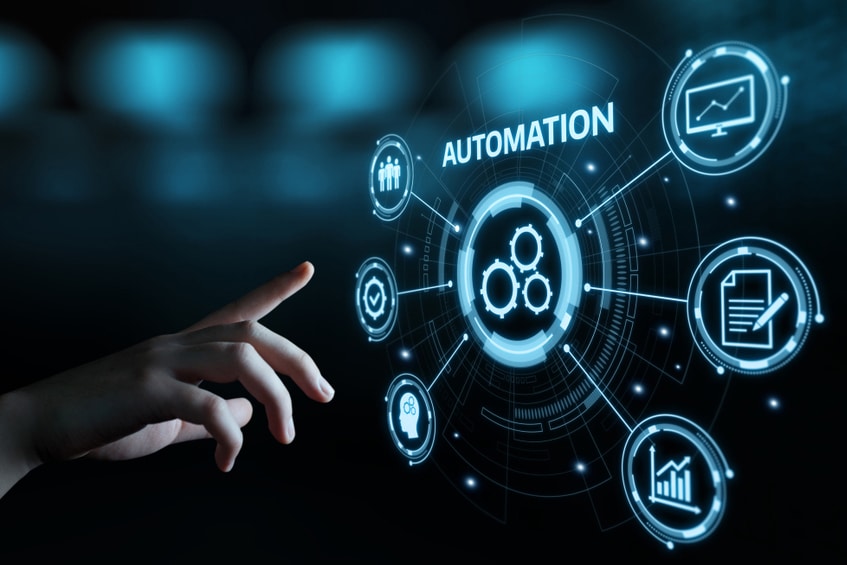COVID-19 has left HR departments to deal with many urgent issues over the past 2 years, like the loss of talent and the immediate need to bolster recruitment efforts. While these tasks are time-consuming even in the best of circumstances, the increase in work brought on by the pandemic has HR departments dedicating more efforts to menial tasks such as document processing, data entry, and cross-department communication and collaboration.
McKinsey reports that pre-pandemic, the typical HR department spent close to 60% of its time and resources on transactional and operational tasks. To address this overload, many companies are turning to automation software to tackle the manual transactions that keep them from spending time on the areas of HR work that benefit the long-term health of their companies.
Let’s take employee onboarding as an example. The process of bringing on a new hire typically follows the same steps regardless of any variable factors. Onboarding documents must be signed, benefits must be enrolled in, and documents must be approved and filed with the appropriate departments and agencies.
The pandemic has added another layer of complexity to this process due to vaccination requirements and the fluid nature of the regulations governing business practices, which are complicated further if HR teams are juggling with remote employees.
Another McKinsey study found that companies that reported high levels of satisfaction with HR are 1.3 times more likely to report financial outperformance. A protracted onboarding process slows new employees’ progress as they ramp up in their role, steepening the learning curve and, in some cases, leading employees to accept offers from other employers—all contributing negatively to a company’s bottom line.
Meeting Needs of Human Resources
For HR departments looking to streamline their processes and create happier, more productive workforces, automation is key. Research by Bain noted that workplace productivity, especially among highly skilled workers, can increase up to 30% by automating manual, transactional processes. Well-chosen and implemented automation solutions can handle repetitive processes with little human intervention.
A variety of options exist in the market to meet the digital transformation needs of HR departments:
No Code, No Problem
Low-/no-code tools are software design systems that allow nontechnical people to execute software without composing code. A growing number of low- and no-code options exist on the market, and these tools require little to no programming experience to set up and run. Drag-and-drop tools and prebuilt templates allow any staff member, regardless of IT expertise, to become a “citizen developer,” managing his or her own automation projects with just a few clicks. Continuing with the onboarding process as an example, HR professionals can build their own workflows, creating automatic notifications and approval points involving multiple colleagues inside or outside the department. This can ensure a more seamless and intuitive process for all.
Calling All Platforms
HR requires multiple platforms to manage the various aspects of operations and employee experience. To better streamline these processes, automation tools can offer application integrations that allow users to automatically transport, merge, and collect data across various existing sources, like CRMs, Google Sheets, ERPs, and a range of other databases. With easily integrated platform capabilities front and center, employees are guided through a central hub for all the disparate forms, documents, and training required for their duration as employees.
HR, Robot
Automation tools have increasingly begun to feature robotic process automation (RPA), a software robot that mimics human actions. RPAs can manage mundane, repetitive tasks like sending offer letters to candidates, facilitating health plan enrollment, and updating spreadsheets with employee information. RPAs are largely responsible for automating manual processes and are great for recurring processes like benefits enrollment. RPA tools can notify employees of their window for enrollment, review and approve submissions automatically, and guide employees through the enrollment process, ensuring they don’t miss a form or line along the way. RPA may appear to be a technology of the future, but it can be the key to maximizing resources in the now.
A Holistic Approach
Digital transformation strategies should be applied holistically across an organization, and successful enterprises don’t let their HR departments lag behind other business units when it comes to embracing digitization. Workflow automation allows employees to focus on the more critical functions of their role and empowers employers to find the balance between completing the mundane tasks and maximizing creative thinking in talented employees.
Automation is the key to a future of increased productivity, reduced workflow, and process challenges and can be what delivers a happier workforce for years to come.
Borya Shakhnovich is the CEO and co-founder of airSlate, a leader in workflow automation solutions.
The post Work Smarter, Not Harder: How Automation Can Improve HR Departments appeared first on HR Daily Advisor.
